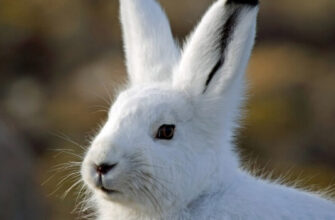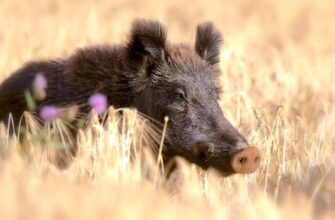The fur seal is a common species of pinnipeds that live almost all over the world. Despite their cute appearance, they are formidable predators. However, they are an important part of the ecosystem, as they occupy an important place in the food chain of many other large carnivores.
Origin of the species and description
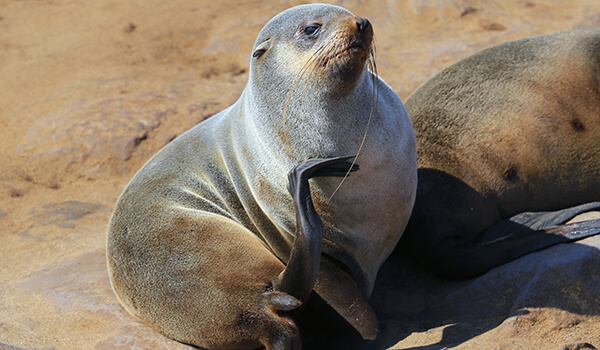
Photo: Seal
Fur seals belong to the eared seal family. These are pinnipedal predators, leading both terrestrial and aquatic lifestyles. It differs from other families of pinnipeds by the structure of flippers and a skull, which is close in shape to a bear's.
Several species are observed in fur seals:
- northern (Far Eastern) fur seal. The most common species inhabiting the Pacific Ocean;
- South American fur seal. Includes two subspecies, slightly different from each other: Arctocephalus australis gracilis and Falkland fur seal;
- New Zealand fur seal. Gray-brown fur seals, the males of which are distinguished by a thick mane;
- Galapagos fur seal. The smallest species;
- Kerguelen fur seal. They are distinguished by interspersed with gray or gray wool;
- Cape fur seal. Large individuals with velvety red fur;
- Guadalupe fur seal. In this species, sexual dimorphism is most noticeable: males are much larger than females;
- subtropical fur seal. Large representatives of the family with thick fur.
The evolution of pinnipeds is peculiar and has many questions. Like whales, in the course of evolution, these animals first left the ocean to live on land. The ancestors of fur seals were mustelids, who led both terrestrial and aquatic lifestyles.
Mustelids fed mainly from the ocean, since they did not know how to run fast and did not have various means of self-defense against large land predators. This forced the first mammals to constantly descend to the depths. Evolutionarily, they first acquired the ability to hold their breath for a long time, and then they developed a web between their fingers.
The intermediate species found indicate that predatory mammals are the second wave of animals that returned to the ocean after the whales. The fingers on their paws stretched out and overgrown with a dense membrane, which eventually became flippers. Fur seals, judging by the structure of their hind flippers, are closest to the primitive land forms of life, which subsequently went into the water.
Appearance and Features
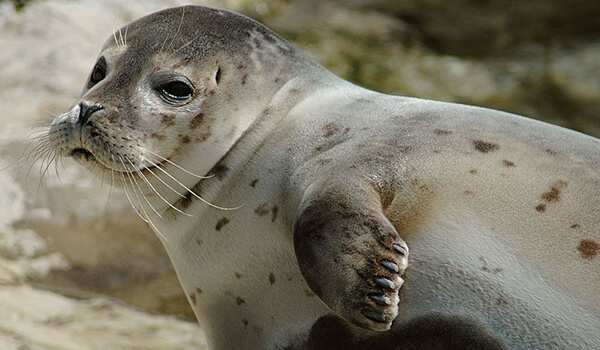
Photo: Fur seal in nature
Fur seal sizes vary by subspecies. The largest representatives (Cape and Far Eastern) reach a length of two and a half meters, and weigh about 200 kg. The smallest representatives of fur seals (Galapogos fur seal) reach a length of one and a half meters, weight ranges from 60-80 kg., in males. Females tend to be much smaller than males – all fur seal species exhibit sexual dimorphism, but some are most pronounced.
Interesting fact: To distinguish a fur seal from a seal, it is enough to pay attention to their ears – they should be distinctly expressed and, as a rule, covered with fur.
The body of fur seals is elongated, the neck short, thick, inactive. Relative to the body, a small head, a short, sharp muzzle. The eyes are black, large; large, mobile nostrils are pronounced, which close tightly when the fur seal dives.
Video: Fur seal
The front flippers are located on the sides of the body – they are short and flat. The hind flippers are at the end of the body, they are shorter than the front ones. Unlike the flippers of seals, the hind flippers of fur seals are parallel and do not close together when walking.
Often, males have a mane around their neck – a dense thick layer of fur. Similar fur is in the closest relatives – sea lions. Most subspecies of fur seals are completely covered with a dense layer, and this fur was very much appreciated as a trade.
Pups of fur seals are black, small, completely covered with dense fur. They move quickly on land due to their light weight and relatively long flippers, which shorten with age.
Fun fact: Fur seals have a tail, but it is short and almost invisible between the two rear flippers.
The weight of female fur seals can vary between 25-60 kg, depending on the species. They do not have thick hair and mane, their muzzle is shorter than that of males. All fur seals have poor eyesight, similar to myopia, but excellent hearing and smell. They have the ability to echolocate, so they can detect predators underwater.
Now you know the difference between a fur seal and a seal. Let's find out where this amazing animal lives.
Where does the fur seal live?
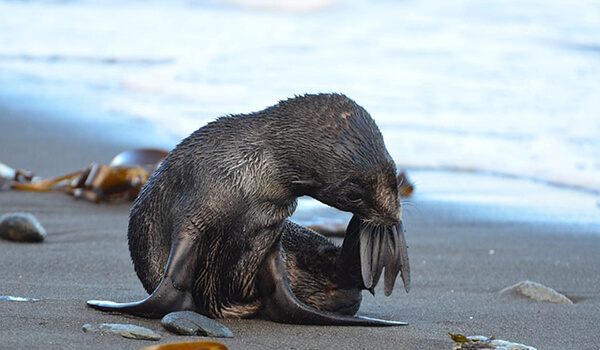
Photo: Fur seal in Russia
Fur seals choose islands and coasts as habitats, where they settle in large flocks. They live only near salt water and are not found in inland waters such as rivers and lakes. Since fur seals are more adapted to life on land than seals, they prefer gently sloping, mostly rocky shores. Sometimes they can be seen on empty rocky islands, where they bask in the sun.
In general, fur seals can be found in the following places:
- California;
- Japan;
- Pacific Islands;
- Coasts of South America;
- Falkland Islands;
- New Zealand;
- south and west Australia;
- Galapagos Islands;
- South Georgia Islands;
- South Sandich Islands;
- Prince Edward Islands;
- South Shetland, Orkney;
- Bouvet;
- Kerguelen;
- Heard;
- Macquarie;
- Bass Strait;
- South Africa's Namib Desert;
- South Atlantic and Amsterdam
Fur seals prefer warm waters. Usually they migrate with the onset of cold weather to warmer places, swimming from island to island in a large flock. But in the warmest regions, fur seals can stay all year round. The Kerguelen fur seal is the most adapted to the cold climate, since it can be found almost throughout the Antarctic, but it leads a migratory lifestyle.
Seals choose spacious territories for rookery, do not build houses or dig holes. They are territorial animals, and the male jealously guards the territory, although females can easily cross the borders of the flock and come to other rookeries.
What does a fur seal eat?
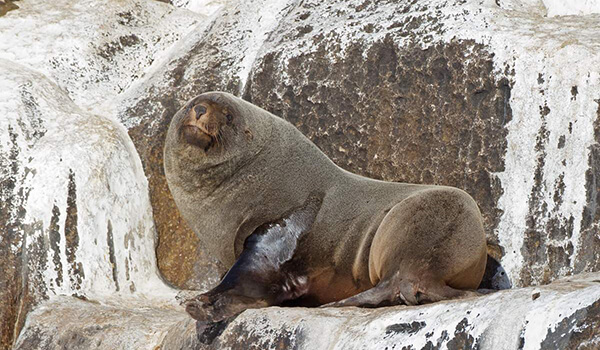
Photo: Fur seal from the Red Book
Fur seals are exclusively predators. They come out to feed every day except during the rearing period. During the summer, fur seals eat a lot to store fat in the cold season, when food is scarce.
The daily diet of fur seals includes:
- various fish (mainly herring, anchovies, pikes, small sharks, cod, stickleback, flounder);
- frogs;
- crustaceans;
- clams;
- octopus, squid, cuttlefish, jellyfish.
Digestion of food in fur seals is very intensive, therefore, studies and autopsies of dead animals do not give an accurate indication of the diet of fur seals. Scientists have discovered that they even eat poisonous jellyfish that float up to fur seal rookeries.
Various birds often settle next to fur seals – gulls, albatrosses, petrels. They do not show aggression towards their neighbors and do not hunt on land, while seals, relatives of fur seals, can attack birds and small mammals. Sometimes algae are found in the stomachs of fur seals: they probably get there by accident along with fish; however, fur seals can sometimes be seen biting grass in haulouts.
Fun fact: Fur seals are indifferent to salmon and halibut – they do not attack these fish at all.
In the water, fur seals are very dexterous and dangerous predators. They move quickly underwater and catch slow prey, immediately devouring it whole. The stomach of fur seals contains pebbles, absorbed by them in the process of feeding – they play the role of a “grater”, helping the stomach to cope with solid food.
Peculiarities of character and lifestyle
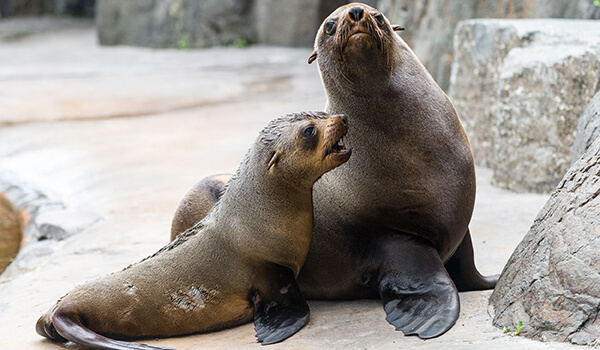
Photo: Fur Seals
Fur seals are pack animals that rookery on the coasts and islands. They feed both at night and during the day, as they rely on their hearing, smell, and echolocation. On the shore, they bask in the sun and rest, digesting food.
Move on land awkwardly, pushing off with front and rear flippers and shaking their neck back and forth. Subcutaneous fat also helps them in moving, on which they seem to bounce, pushing off the ground. But fur seals swim perfectly, developing speeds from 17 to 26 km., per hour.
Northern fur seals migrate regularly as winter sets in, moving to warmer regions. There they arrange rookeries and rarely feed, losing weight greatly during the cold period. In the spring they return, arranging the breeding season.
In most cases, fur seals are not aggressive and shy, although there is a place for curiosity. Only during the breeding season, males become too aggressive and almost do not feed due to constant supervision of females.
Fur seals are polygamous. The male has a harem from three to forty individuals – the size of the harem depends on the strength of the male and his aggressiveness. He needs to regularly beat off females from other males who also want to form their own harems.
The fur seals do not have any means of self-defense. They are defenseless both on land and in water. Female fur seals are unable to protect their young, which may be attacked by terrestrial predators or large birds such as albatrosses. In case of danger, they prefer to run to the water.
Social structure and reproduction
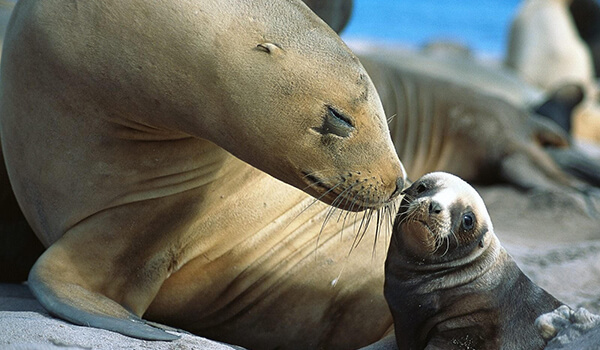
Photo: Baby Fur Seal
The breeding season falls in the spring, but this may be earlier or later, depending on the arrival of heat. Males swim to rookeries – islands and coasts, trying to occupy as much territory as possible. There they begin the first battles for the right to occupy this or that piece of land. The strongest male occupies a large territory.
Males begin to roar, attracting females to their territory. Females move freely between males' territories, choosing the most suitable place for breeding. If they like the territory, then they will stay with this male – so the strongest males take large territories and a large number of females for themselves.
Fun fact: Sometimes a male tries to steal a female from another harem by grabbing her by the scruff of the neck. Moreover, if the “owner” of the female notices this, then he will begin to drag her in his direction. Given the difference in size between individuals, the female often suffers injuries incompatible with life after such a struggle.
A harem can have up to forty females. In the same period, mating takes place, during which the males begin their fights again, and the females again choose which male to produce offspring from. The female's pregnancy lasts a year, but during her course she can mate with other males.
At the first stages of pregnancy, the female is as active as before, but after six months she goes out to feed less often. The closer the birth, the more the female spends time on the shore, and her body feeds on fat reserves. About two weeks after giving birth, she stays with the baby and feeds him. A fur seal is born weighing just over two kg., And at first it is not able to move along the coast on its own.
After two weeks, the female is so exhausted that she is forced to leave the child alone and go hunting. During this period, the fur seal may make its first short swim offshore while the mother waits. Without a mother, he is especially vulnerable, because he can easily be simply crushed by other fur seals, next to which he will be.
An interesting fact: A male from another territory can penetrate to give birth to females to mate with them; to do this, he kills their young while the females go out to hunt.
The mortality rate of young is very high. If a female loses a calf in the first two weeks after giving birth, she may become pregnant again, but late calves rarely survive the onset of cold weather.
Natural enemies of fur seals
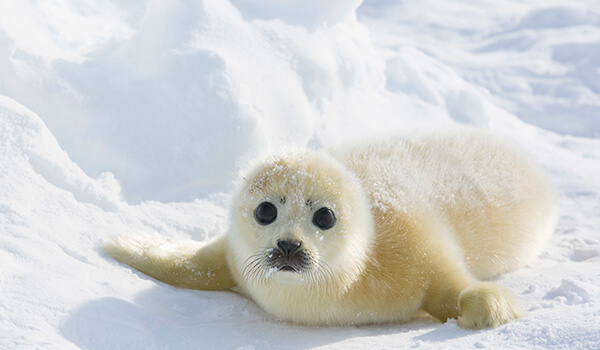
Photo: Little Fur Seal
Seal takes important place in the food chain. While it preys on many fish and shellfish, other creatures prey on the fur seal.
These include:
- killer whales. These formidable predators hunt fur seals not only for food, but also for fun. They drive one individual onto a small island, and then throw themselves onto it, grabbing prey. Orcas can sometimes be seen throwing fur seals into the air and catching them;
- sharks, including great whites. Sharks are swift in pursuit of fur seals, and they often give way to large fish;
- albatrosses, petrels, cormorants attack baby fur seals – small fur seals are defenseless against large birds.
When a fur seal is attacked by a shark or killer whale, the first thing it does is try to swim away, reaching speeds of up to 26 km per hour. Sometimes this is enough to get to the nearest shore and get out on land, although some sharks and killer whales are washed ashore after them. Sometimes this plays a trick on white sharks, who are unable to return to the water, so they die with the fur seal in their mouths.
Population and species status
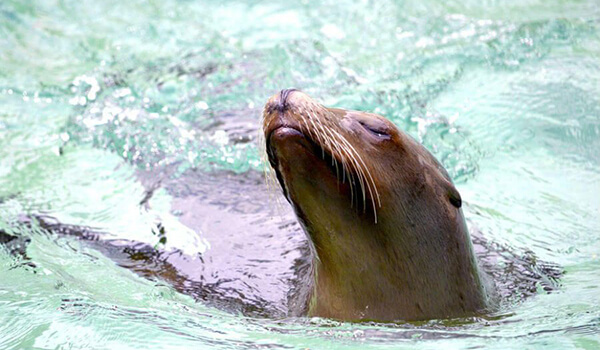
Photo: Fur seal in water
B In the 18th century, the population of fur seals was a commercial object. People rapidly exterminated fur seal cubs because of soft fur and valuable fat, because of which, in two centuries, fur seals reached a critical population level, being on the verge of extinction.
The measures taken to protect the seals have not been effective, and they could have died out completely if the number of fur seal skins on the market had not become too large, which caused them to fall in price. The fur seal hunt was ended due to lack of profit.
The fur seal ban has led to an increase in the population. An extremely large number of fur seals are observed on the island of South Georgia, where there are more than two million individuals. Most subspecies of fur seals are in a stable position in terms of numbers, but if there are exceptions.
Fur seals get along well with people in captivity. They are trainable and are a non-aggressive species that is safe to contact, unlike seals and sea lions. In zoos and aquariums fur seals are fed dead fish – herring and anchovies.
Seal Conservation
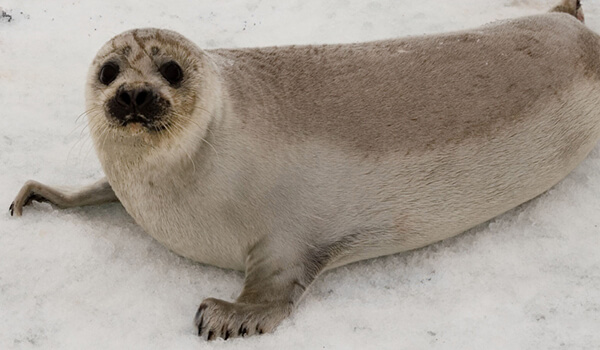
Photo: Fur seal from the Red Book
The northern fur seal has been on the International Red Book since 1911. It was the object of a wide trade because of the dense skin and fat, to which many healing properties are attributed. On the territory of Russia, Tyuleniy Ostrov and the Commander Islands are reserved because of the large-scale rookeries of northern fur seals.
Hunting for northern fur seals became especially widespread in 1780, at the time of the formation of the Russian-American Company. Only in the period from 1799 to 1867, more than two and a half million representatives of this subspecies were destroyed.
The number of fur seals decreased to 130 thousand by 1910, which is a critical mark due to the short life expectancy and weak survival of the young. At the moment, only single male northern fur seals are allowed to be hunted. In captivity, fur seals live up to 30 years, but in the wild, most die in the first two years of life.
The fur seal is an amazing animal that inhabits many areas of the planet. They are threatened not only by poachers and natural predators (killer whales and sharks only regulate the population of fur seals, but do not destroy them), but also global warming. Due to the melting of glaciers and pollution of the world's oceans, they are deprived of rookeries and territories for hunting.


